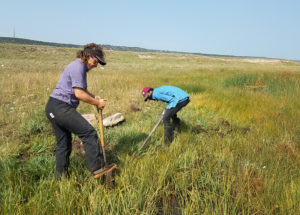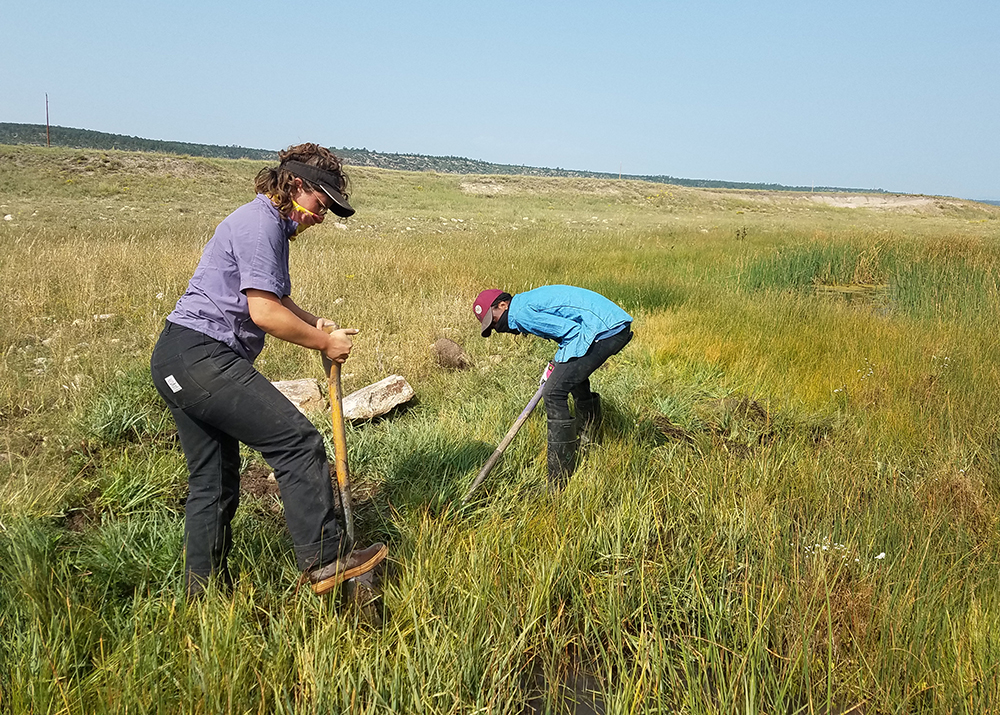Las Vegas, NM – A wetland habitat near Watrous, New Mexico, is healthier thanks in part to Highlands student volunteers.

Albuquerque Wildlife Federation president Kristina Fisher, left, and Highlands forestry student Annie Topal prepare a site on Wolf Creek for a one rock dam, a type of rock structure designed to enhance wetlands.
Along with members of the Hermit’s Peak Watershed Alliance, the Albuquerque Wildlife Federation and Ft. Union Ranch, the students helped restore a section of Wolf Creek approximately 20 miles northeast of Las Vegas.
“Our most precious resource in New Mexico is water, and climate change has brought about extended drought with unreliable and unpredictable monsoons,” said Shantini Ramakrishnan, conservation and restoration education program manager at Highlands University. “Wetlands in New Mexico are increasingly rare and dwindling but are critically important to conserve.
They are often the only water resource in an otherwise dry and arid landscape.”
Shantini said the restoration work is done by using grade-control structures such as one rock dams, a construction of a single layer of rocks that have been used to divert and hold water by many indigenous communities in the Southwest.
“These structures slow down the water, reduce flow velocities, decrease erosion of productive topsoil, and encourage water infiltration into the soil, where water is less vulnerable to evaporation” Shantini said. “By building a series of these structures in a creek system, the overall effect if to make the entire area wetter for a longer period, which encourages wetland vegetation to grow, which provides food, water and shelter to native wildlife.”
Forestry major and Highlands senior Annie Topal said she volunteered for the restoration project because she wanted a deeper understanding of how the rock structures help restore the ecosystem.
“It enables us students to learn the theory in the classroom then participate in doing the practical outside, learning more about the importance of the restoration projects” Topal said. “It gave me a new perspective on the wetlands restoration.”
Shantini said Highlands students in field classes and seasonal interns have been involved in this work since 2014 and have helped to build dozens of structures.
“By actively restoring wetlands, students learn to read the legacy effects of human impacts on the environment, practice restoration techniques alongside with New Mexico restoration practitioners, contribute towards the rehabilitation of important habitat, and gain lasting lessons as they pursue careers in natural resources,” Shantini said.
Shantini said the Wolf Creek project started in 2017 and was designed by New Mexico restoration expert Bill Zeedyk, a retired U.S. Forest Service employee and natural resource conservation expert who has shared his expertise in restoration work with Highlands’ students and classes.
“It’s important to protect wetlands that we still have and expand the availability of this precious resource,” Shantini said. “This means making water available for a longer period of time and over a greater area.”

